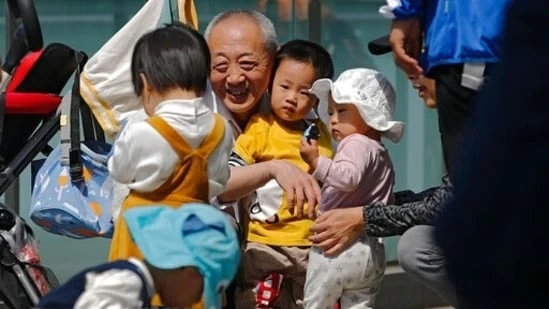
China’s surprise decision to allow all couples to have a third child may be too little too late to reverse the nation’s declining birthrate and shrinking workforce.
Economists and demographers say authorities will need a range of supportive policies on childcare and measures to curb high education and housing costs to make it viable for couples to expand their families.
China has been gradually reforming its stringent birth policy that for decades limited most families to having only a single child. In 2016, couples were allowed to have a second baby, although that did little to boost the birthrate. In a meeting presided over by President Xi Jinping on Monday, the Communist Party’s Politburo agreed to ease the current two-child restriction and also raise the retirement age in a bid to boost the labor force.
“It is an important policy move, but the three-children policy alone will not lead to a sustained rebound in the fertility rate,” said Yuan Xin, a professor at Nankai University in Tianjin. “A whole package of services and polices, such as childcare, tax-rebates for parents, housing subsidies and even gender equality, are needed to create a social environment that encourages parents to have more babies.”
Some government officials, including researchers at China’s central bank, have called for birth limits to be abolished entirely. The debate was intensified after the results of China’s latest national census earlier this month showing a decline in the country’s working-age population over the last decade.
The declining birthrate means China’s population, currently at 1.41 billion, may begin to shrink before 2025, according to Bloomberg Economics estimates. There were 12 million new babies born last year amid the uncertainties of the coronavirus pandemic, the lowest number since 1961.
Yuan of Nankai University said a fertility rate of 1.8 is ideal for healthy population growth. The rate is currently at 1.3.
China’s fertility rate began a steady decline from the 1970s, as education levels increased and the government encouraged rural women to have fewer children, culminating in the national “one child” policy which applied to most women from the end of that decade. The rules were often harshly enforced, especially in countryside areas where officials sometimes ordered women to have abortions.




















